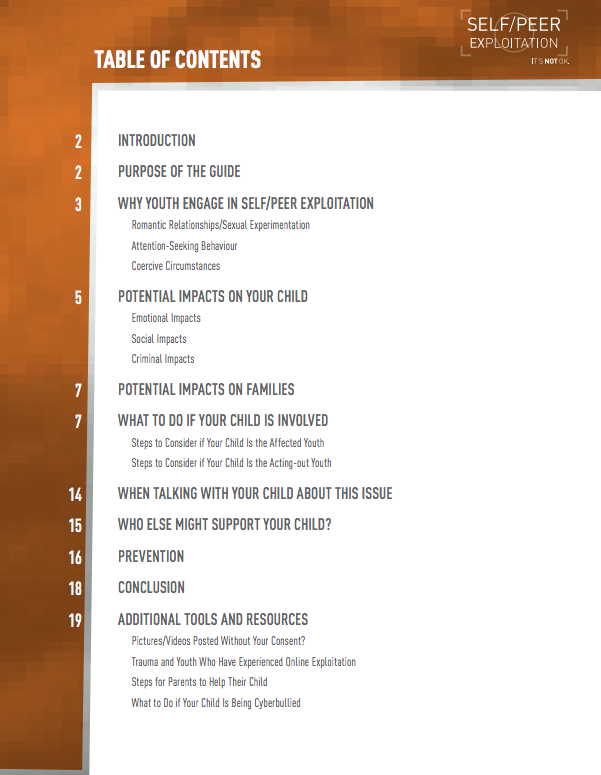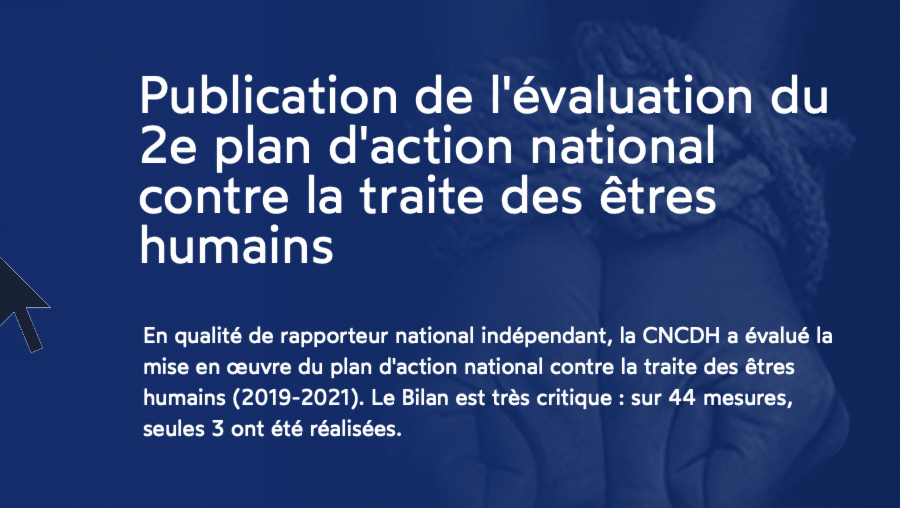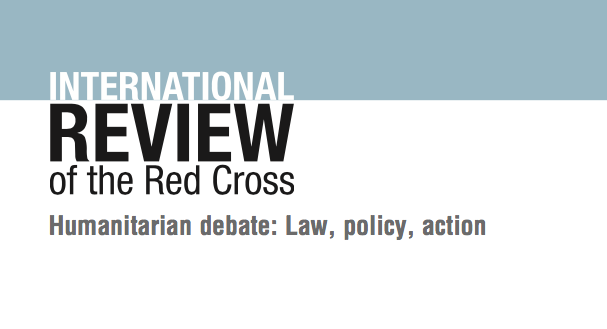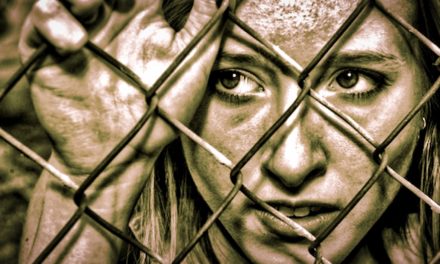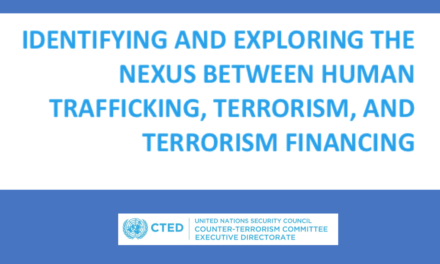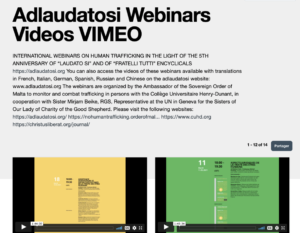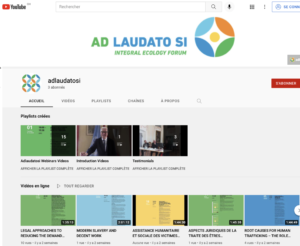The issue of self/peer exploitation1 has become a growing concern for school personnel and parents. Coined in the media as “sexting,” this behaviour is generally defined as youth creating, sending or sharing sexual pictures and/or videos with peers via the Internet and/or electronic devices. It usually involves exchanging pictures/videos through smartphones, apps and social networking sites. Concerns over this type of behaviour are escalating, namely because:
- the consequences can be harmful in the short and long term; and
- children are growing up in a technology-rich environment and are almost certain to be confronted with a self/peer exploitation incident(s) at some point during adolescence.
This resource is designed to assist families when responding to a self/peer exploitation incident and is also a useful tool to use as a basis for discussion with your child about preventing her/his involvement in this type of activity.
Self/peer exploitation is defined as youth creating, sending or sharing sexual pictures and/or videos with peers via the Internet and/or electronic devices.
Involved youth are defined as:
- Affected Youth: Youth whose picture/video has been taken and/or distributed, whether by themselves or someone else.
- Acting-out Youth: Youth who have taken and/or distributed a picture/ video of someone other than themselves.
- Other Involved Youth: Bystanders who are in receipt of the distributed picture/video, whether by the affected youth or the acting-out youth.
PURPOSE OF THE GUIDE
The Canadian Centre for Child Protection (protectchildren.ca) has created this Resource Guide for Families in conjunction with A Resource Guide for Schools that assists school personnel in adequately responding to these types of incidents. If your child has created and shared a sexual picture/video of themselves with a peer(s) or shared a picture/video of a peer with others, this guide will serve to:
- offer you some practical guidance for supporting your child and addressing the situation;
- help reduce the potential negative impact on your child (and your family) if this occurs;
- help minimize your child’s involvement in this type of activity; and
- offer guidance that may limit the circulation of the sexual picture(s)/video(s).


